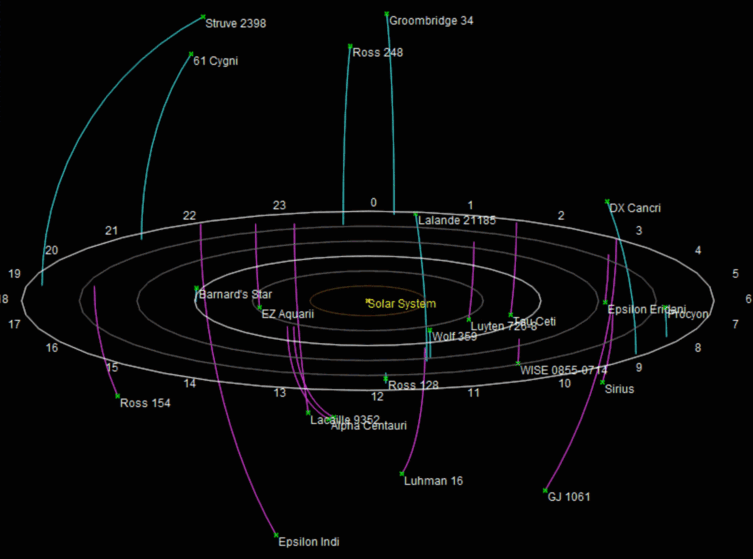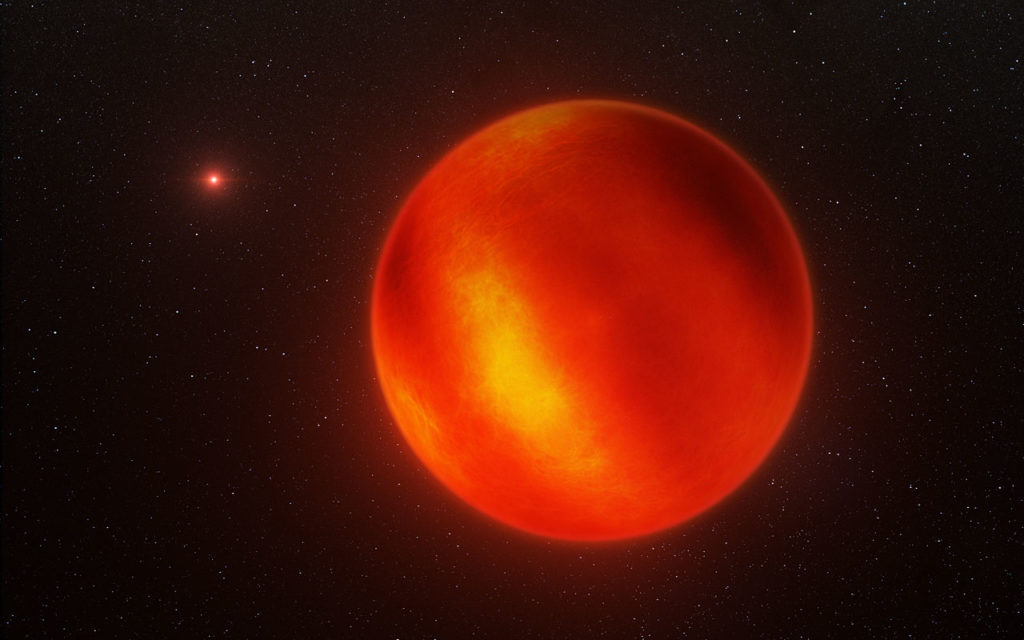If you’ve heard of Luhman 16AB then I salute you. And if you haven’t, then I despair at the state of astronomy education in schools today. What? They don’t teach astronomy at school? Well, if they did, how would your teacher explain Luhman 16AB?
“Today we’re going to talk about brown dwarfs, stellar objects that are too big and hot to be planets, and too small to be stars.”
“Then what are they teacher?”
“That’s what we’ll find out in today’s class.”
“I did a few brown dwarfs this morning sir.”
“Enough! Open your books. Page 563, “Star formation.”
The European Southern Observatory defines a brown dwarf as filling “the gap between gas giant planets, such as Jupiter and Saturn, and very cool stars.” What sets a star apart from a brown dwarf is its ability to ignite its core, and through sustained nuclear fusion, produce heat and light. Brown dwarfs only emit in the infrared spectrum. They may engage in a less energetic form of fusion using the hydrogen isotope, deuterium.
Scientists have therefore referred to them as “failed stars”. And science animation channel, Kurzgesagt, jumps at every opportunity to mock them savagely as huge disappointments to their interstellar parents. But Luhman 16AB don’t need your pity (yes, they’re a binary system). Rather than calling brown dwarfs “failed stars”, Luhman 16 (both A and B) would like you to think of them as “boss planets”.
As mentioned, Luhman 16AB is actually a double system, like Sirius, with the protagonists designated Luhman A and Luhman B. Interestingly, both are brown dwarfs. Is this a coincidence, or is there something about the Luhman system (not enough total mass) that has prevented both bodies from igniting into fully fledged stars? Are brown dwarf binaries common in the galaxy? Indeed, are brown dwarfs themselves common?
Our ruddy neighbours
At only 6.5 light years away (2.0 parsecs), the Luhman system is the third closest system to the sun (after the Centauri triple star system and Barnard’s Star). However, when talking about sub-stellar objects, the Luhman system is the closest of these to Earth.

Their proximity make Luhman 16AB tantalising candidates for scientific study. In late-2013, astronomers inferred a possible third companion, and if confirmed, this could be a planet up to twice the size of Jupiter.
While the Luhmans are neither stars nor planets, they have weather, just like our gas giants. Although raining molten iron is not the ideal weather for a Sunday barbecue, both Luhman 16A and B exhibit cloud bands like Jupiter. Luhman 16B may have cloud patches, but these could be temporary storms, similar to those observed on Jupiter and Saturn.
The Luhman twins are not star-like enough to always appear in lists of closest stars although they are still though assigned a spectral type. Luhman A has spectral type L7.5, and B’s is T0.5±1.
‘L’ and ‘T’ correspond to two spectral types of brown dwarf: L type and T type. Spectral type refers to a star’s temperature and luminosity. The surface temperature of Y-type brown dwarfs ranges from 200K to 500K (-73C to 227C). Interestingly, our planet lies within this range! Compare the sun, a G-type yellow dwarf, which has a surface temperature of 5700K (5427C).
Brown dwarfs are hard to detect because of their small size and dimness, so we cannot be sure how common they are. Any stellar object with a mass at least 80 times that of Jupiter is classified as a star. The smallest stars are the red dwarfs, making up 75% of known stars in our galaxy. Could brown dwarfs be even more numerous?
And can they have planets orbiting them? In 2004, the Very Large Telescope in Chile directly imaged a gas giant orbiting the brown dwarf designated as 2M1207. Rocky exoplanets are, of course, much harder to detect.

Our knowledge about brown dwarfs is still as dim as the objects themselves, so the general population can be forgiven for not knowing about the Luhman 16AB.
However, once humanity gets its act together and focuses on the noble cause of space exploration (as opposed to endless growth and competition, military dominance and climate destruction) we may send a probe to Luhman 16AB. And perhaps we’ll find a rocky planet or two. Maybe we’ll find as many planets as Jupiter has moons. And if the brown dwarfs are stable enough and don’t arbitrarily bathe their planets with crippling radiation bursts, perhaps we’ll discover life.
More data on Luhman 16AB
Spectral type: A: L7.5 B: T0.5 ± 1
Apparent magnitude (V): 16.20
Mass: A: 0.032 | B: 0.027 solar masses
Temperature: A: 1350K | B: 1210K
Distance: ≈6.5 light years
Age: ≈600-800 million years
As Luhman 16 was not discovered until 2013, it doesn’t feature in ancient mythology and has barely had time to enter the realm of science-fiction. However, In Rocket Science (Book 1 of Tales from the Orion Arm), Luhman 16AB is home to one of humanity’s most industrialised systems and is orbited by two rocky planets, Crete 581c and Crete 581d.
